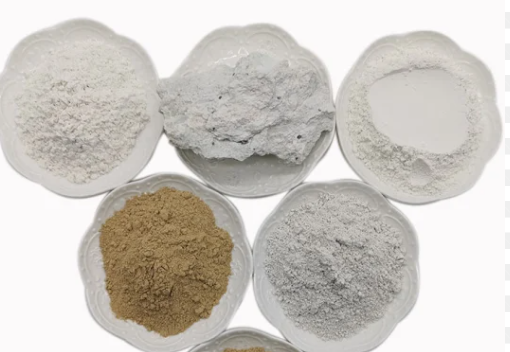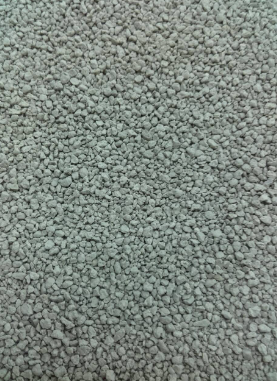- Understanding the Role of Geomembrane Liners in Waste Management
- Innovations in Geomembrane Liners for Water Management
- Geomembrane Liners: A Comprehensive Guide
- The Future of Geomembrane Liners in Civil Engineering
- Geomembrane Liners: Enhancing Landfill Stability
Manager:
WhatsApp:+86 177 0135 2670
Tel:+86 177 0135 2670
Email:marketing@okorder.com
Address:3rd Floor, No.2 Building, No.1 Sanlihe Road
Does bentonite absorb moisture?
Bentonite, is a highly versatile clay material, which has been known for a long time to be able to take in water. One of its popular applications is through bentonite blankets that are used in the construction industry as well as environmental protection. This article goes into the properties of bentonite, and explores its moisture absorbing capabilities and importance of bentonite blankets in different settings.

Understanding Bentonite:
Bentonite belongs to the group called smectites which are derived from volcanic ash deposits. These types of clays consist mainly of montmorillonite which swells when exposed to moisture. It consists of this kind of unique formation that enables it to absorb water in great amounts and expand significantly as a result.
Moisture Absorption Mechanism:
The high surface area together with cation exchange capacity is responsible for the moisture absorption mechanism inside bentonite. Bentonitic particles have many tiny interstices and canals that allow water molecules to permeate inside it and be absorbed by it. Moreover, aluminosilicate minerals like sodium, calcium or potassium contained by it can attract water molecules through electric forces.
Hygroscopic Nature:
Properties related with hygroscopy observed on bentonites imply their capacity to acquire moisture from nearest environments they are present at. This property makes them useful desiccants as well as sealing compounds necessary for many purposes where moisture control is vital. In places where humidity levels are high or infiltration of moisture is likely, this hygroscopic nature possessed by bentonites can be very advantageous.
Applications of Bentonite Blankets:
Bentonitic mats, also known as geosynthetic clay liners (GCLs) or simply bentonitic blankets represent engineered materials meant for containment purposes waterproofing leakage tests among others. More often than not this type composes out fabrics sandwiching one another with a middle layer of bentonites. The bentonite layer is meant to repel water and ensure that the insides are dry.
Waterproofing and Sealing:
The main application of bentonitic blankets lies in various construction projects where they are used in waterproofing and sealing systems. They act like impermeable membranes preventing water from getting through to foundations, basements, tunnels as well as other subterranean structures. The swelling nature of bentonite gives it capability to tightly seal out ingress by water under high hydrostatic pressure.
Landfill Liners:
Bentonite blankets are commonly applied as landfill liners that function to contain leachate thereby protecting groundwater from contamination. Through creating such barriers that hinder migration of impurities, these blankets become significant environmental protection measures alongside waste management activities. When clay gets wet, it swells hence helping minimize the potential for leakage by self-sealing its containment system throughout time.
Erosion Control:
In soil stabilization systems, bentonitic mats are provided so as to control soil erosion within slopes, embankments or channels. It helps prevent erosion which can result from runoff or wind by ensuring that the moisture content is maintained at the required level and further increasing cohesion among particles held together by aggregates. Bentonitic mats help fortify the structure of soil leading long-term erosion control plus stability on slopes.
Geotechnical Engineering:
Geotechnical engineering involves the use of bentonite blankets in soil improvement, groundwater cut off, and seepage control. When they are used as a sole barrier or when integrated into composite liners, bentonite blankets are effective in managing groundwater flow, mitigating liquefaction hazards and enhancing the stability of earth structures. Bentonite blankets are versatile; hence most preferred for projects in geotechnical that need satisfactory systems of moisture barriers.

Conclusion:
In conclusion, bentonite is a good material for constructing new bentonite blankets because it has outstanding moisture absorption qualities. In other words, they protect areas from water logging by acting as water proofing agents thus maintaining dry conditions within its site. This means that by using just this single property to achieve an outcome which results to some sustainable as well as resilient infrastructure development; environmentalists and engineers will be able to manage issues like infiltration of water through top soil; contamination of ground water due to industries activities or lastly soil erosion.”
-
2024-05-15How long does bentonite waterproofing last?
-
2024-05-15What is bentonite used for?
-
2024-05-15What happens when bentonite gets wet?
-
2024-05-15Does bentonite go bad?






